Sure, perennials and woody plants provide a garden with lasting structure, but for me, annuals are the mainstays of the summer garden. When it comes to their intense colors, low maintenance, and profusion of blooms, annuals are unmatched. Their rapid growth helps fill empty spaces, and plants often outcompete pesky weeds. Best of all, using annuals gives me a chance to experiment with a different canvas of colors and textures each year without the commitment that comes with planting hardy perennials and shrubs. Whether in the garden or in containers, annuals work tirelessly to transform a garden plot into the bountiful oasis we all crave in the heat of summer.
As much as I love annuals, I realize it can be a challenge to find unusual varieties. As a grower of specialty plants and cut flowers, I am always amazed by the abundance of homogeneous petunia and geranium plants and the dearth of alternatives that are offered to gardeners each spring. Over the past decade, I have stumbled upon a stunning array of reliable annual plants. My list of favorites includes many that can be found at a local farmers’ market or small nursery. If you can’t find them locally, you can buy their seed from a specialty-seed supplier. These annuals are easy to grow from seed and will, in turn, produce seed that you can collect and save for the next season—or give to friends and neighbors who will, no doubt, comment on the uniqueness of the plant.
Flower-of-an-hour fills gaps with charming form and flowers

Botanical name: Hibiscus trionum
Bloom time: Summer to fall
Size: 24 inches tall and wide, with blooms 1½ inches wide
Culture: Put plants in a sunny spot with moist, well-drained, fertile soil.
Seed starting: Sow seeds indoors four to six weeks before the last frost or outdoors after danger of frost has passed.
Germination time: 7 to 10 days
A seldom-seen annual or short-lived perennial in USDA Hardiness Zones 10 and 11, flower-of-an-hour is a plant that I am constantly pointing out to people, inviting them to take a closer look. This easy-to-grow annual performs as the perfect filler in beds and containers. It forms a well-branched compact mound of deeply lobed, dark green leaves, which provide an interesting textural backdrop to its charming, hibiscus-type flowers.
The flowers are truly stunning with their cream petals, purple-hued undersides, and deep burgundy centers. While each flower lasts only a single day, the plant blooms profusely all season and produces inflated seedpods. The flowers will not normally open on a cloudy day, but this is a small price to pay for such a gem of a plant.
South African foxglove stands up to drought and deer

Botanical name: Ceratotheca triloba
Bloom time: Midsummer to fall
Size: 60 to 72 inches tall and 24 to 36 inches wide, with blooms 2½ inches long
Culture: Place plants in an area with well-drained soil and full sun to partial shade. Plants are extremely drought tolerant.
Seed starting: Sow seeds indoors four to six weeks before the last frost or directly in the garden after danger of frost has passed.
Germination time: 7 to 10 days
A rare and graceful beauty, South African foxglove is one of my favorite annuals for its attractiveness and resilience. It is not a true foxglove, but its flowers are similarly shaped and hang in clusters. They come in shades of white and pink with pale violet stripes highlighting the inner throats.
This plant’s soft coloring brings the delicacy typical of spring-blooming plants into the summer garden. The gray-green foliage has a distinctly nutty fragrance and is deer resistant. As a large-scale plant, South African foxglove holds its own when planted among shrubs and is best complemented by plants with deep purple foliage. It also makes a good cutting flower.
Tassel flower creates an airy, see-through effect

Botanical name: Emilia coccinea (syn. E. javanica)
Bloom time: Summer
Size: 18 to 24 inches tall and wide, with blooms ½ inch wide
Culture: Place plants in a sunny spot with well-drained soil.
Seed starting: Sow seeds indoors four to six weeks before the last frost or outdoors after danger of frost has passed.
Germination time: 7 to 14 days
A captivating little plant for the front of the border, tassel flower produces small, scarlet-orange pompons, which, when viewed from a distance, seem like they’re floating in air. The flowers cluster at the top of wiry stems that rise from a basal rosette of blue-green leaves. Plants occasionally self-sow when sited in a good location.
With its small habit, tassel flower lends itself well to container gardens and fresh-cut flower arrangements, adding an element of whimsy. Its delicate and airy nature looks best with bold-leaved or showy plants in the background, creating a see-through effect. To magnify their magic, I mass several plants together.
Honeywort gracefully edges beds and containers

Botanical name: Cerinthe major ‘Purpurascens’
Bloom time: Summer
Size: 18 to 24 inches tall and wide, with blooms 2 inches long
Culture: Site plants in lean, extremely well-drained soil in full sun. Plants are drought tolerant and may overwinter in Zones 8 to 10.
Seed starting: Sow seeds indoors four to six weeks before the last frost or outdoors after danger of frost has passed.
Germination time: 7 to 10 days
Honeywort, also called wax plant, is a dream of an annual that features attractive foliage and flowers. Fleshy, blue-green leaves clasp arching stems, creating whorls of distinctive foliage. Out of the uppermost whorls, clusters of tubular, deep purple flowers emerge and nod gracefully toward the ground. I have seen them used as cut flowers.
Honeywort is a novel plant for the front of the border and is great in containers, either alone in an artistic pot or paired with white- or yellow-blooming plants. I often notice the humming of bees around this plant. If you plant honeywort in a container, add small gravel or grit to the potting-soil mix to increase drainage.
Flowering tobacco combines well with any color

Botanical name: Nicotiana langsdorffii
Bloom time: Summer
Size: 24 to 48 inches tall and 18 inches wide, with blooms 1 inch long
Culture: Provide plants with fertile, moist, well-drained soil in full sun to partial shade.
Seed starting: Sow seeds indoors six weeks before the last frost, or direct-sow them after the danger of frost has passed. For a better germination rate, sow seeds at the soil surface.
Germination time: 7 to 14 days
I like flowering tobacco because it creates a cooling effect in bright and hot summer gardens. The bloom stalks rise from a basal rosette of midgreen foliage and bear clusters of small, nodding, tubular, chartreuse flowers. The overall presence of the plant leaves an impression of tranquility. The blooms make nice, short-lived cut flowers.
Although flowering tobacco combines well with just about any color, I love to pair it with red, orange, and other hot-colored flowers in a border. In containers, flowering tobacco’s free form provides height without being overbearing. Once established, plants may self-sow in areas with little mulch from year to year, creating serendipitous combinations.
Creeping zinnia spills over container edges and pathways

Botanical name: Sanvitalia procumbens
Bloom time: Early summer to fall
Size: 9 to 12 inches tall and 18 inches wide, with blooms ¾ inch wide
Culture: Place plants in a sunny spot with well-drained soil.
Seed starting: Sow seeds indoors four to six weeks before the last frost or directly into the garden, taking care not to cover the area with mulch until the plants have sprouted and are established. For the best germination, sow seeds at the soil surface.
Germination time: 7 to 12 days
Virtually covered in yellow, daisy-type flowers throughout summer, creeping zinnia makes a cheerful addition to any garden. Plants are mat-forming with bright green foliage. Easy to grow and tolerant of heat and drought, creeping zinnia is a generous bloomer that doesn’t need deadheading. It makes a wonderful ground cover and looks great planted among rocks or along pathways. It’s an excellent filler and spiller for containers, and it combines nicely with just about any summer-blooming plant.
Annual clary sage is a drought-tolerant self-sower

Botanical name: Salvia viridis
Bloom time: Summer
Size: 18 to 24 inches tall and 9 to 12 inches wide, with bracts ¾ inch long
Culture: Grow plants in well-drained soil in full sun.
Seed starting: Sow seeds indoors four to six weeks before the last frost or directly in the garden once warm temperatures are stable.
Germination time: 7 to 14 days
Known for their drought tolerance and colorful, long-lasting blooms, salvias are widely used in garden plantings. One salvia that is seen less frequently is annual clary sage, which features spikes of whorled flower bracts in shades of pink, purple, and white. While the flowers are insignificant, the bracts are quite showy and have an almost papery texture with deep purple veining. These plants do well in containers and are striking when planted in a mass in the garden. Once established in a good site, plants will self-sow year to year. Annual clary sage makes an excellent fresh or dried cut flower.
Pincushion flower adds drama to any garden scene

Botanical name: Scabiosa atropurpurea ‘Black Knight’
Bloom time: Summer
Size: 36 inches tall and 12 inches wide, with blooms 2 inches wide
Culture: Provide plants with fertile, well-drained soil in full sun.
Seed starting: Sow seeds indoors four to six weeks before the last frost or directly in the garden after danger of frost has passed.
Germination time: 7 to 14 days
Nothing adds drama to a garden like deep, rich colors. My pick for most dramatic annual in a garden setting is, without a doubt, ‘Black Knight’ pincushion flower. With a honeylike scent that attracts bees and butterflies, this plant’s deep purple blooms will stop you in your tracks. Each flower sits upon a wiry stem that floats above mounds of bright, delicate foliage, and is a welcome addition to cut-flower bouquets.
I like to use ‘Black Knight’ in containers and in the garden to provide height and to complement any color imaginable. It mixes with warm and cool colors, and it looks good in the company of spike- and daisy-shaped blooms. Best of all, it lends an air of wild movement to summer plantings that appear a little stiff. Plants may require staking or propping up by a neighbor. Extend the bloom time of ‘Black Knight’ with deadheading.
Castor beans bring an exotic look to the garden

Botanical name: Ricinus communis and cvs.
Bloom time: Summer to fall
Size: 6 to 10 feet tall and 3 feet wide, with blooms 1 inch wide
Culture: Grow in well-drained soil in a sunny spot. Staking may be necessary. All parts of the plant are toxic and may aggravate skin allergies.
Seed starting: Sow seeds indoors four weeks before the last frost or outdoors after danger of frost has passed. For a better germination rate, soak seeds in warm water overnight before sowing.
Germination time: 5 to 7 days
For an almost instant tropical look in the garden, nothing compares to the castor bean. Traditionally grown as a deterrent for moles and voles because of its toxic nature, this bold plant makes a statement with its tall stature and large palmate leaves. Several cultivars are available. The selection ‘Carmencita’ offers bronze foliage. A newer cultivar called ‘Carmencita Rose’ features blue-green foliage and spikes of peach-pink flowers. Like other castor beans, both plants produce attractive but toxic seed heads. I generally let a few seed heads mature so I can collect seed to sow for next year, monitoring them closely so they don’t drop before I harvest. Otherwise, I remove them as soon as they start to develop—especially if children have access to the garden. Pair castor bean with other large-scaled plants like giant flowering tobacco (Nicotiana sylvestris, annual), or use it as a backdrop for airy plants like golden jewels of Opar (Talinum paniculatum ‘Kingwood Gold’, annual).
Sunset hibiscus sports tall, showy blooms and seedpods

Botanical name: Abelmoschus manihot
Bloom time: Summer
Size: 60 to 72 inches tall and 24 to 36 inches wide, with blooms 5 inches wide
Culture: Provide plants with fertile, well-drained soil in full sun.
Seed starting: Sow seeds indoors four weeks before the last frost or in the garden once warm temperatures are stable. For a better germination rate, soak seeds in warm water overnight before sowing.
Germination time: 5 to 7 days
A close relative of hibiscus, Abelmoschus manihot is a subtle giant in the garden. Commonly called sunset hibiscus, it has a well-branched habit and glossy, deep green leaves that provide a great backdrop for shorter annuals and perennials in beds and containers. I also like to use it in mixed-shrub borders, where its luminescent, pale yellow flowers with their deep purple centers brighten a scene without being garish.
Each flower lasts only a short time, but there is a continuous succession of blooms throughout the season. The flowers are followed by upright seedpods that resemble okra and are quite ornamental in autumn.
Fine Gardening Recommended Products
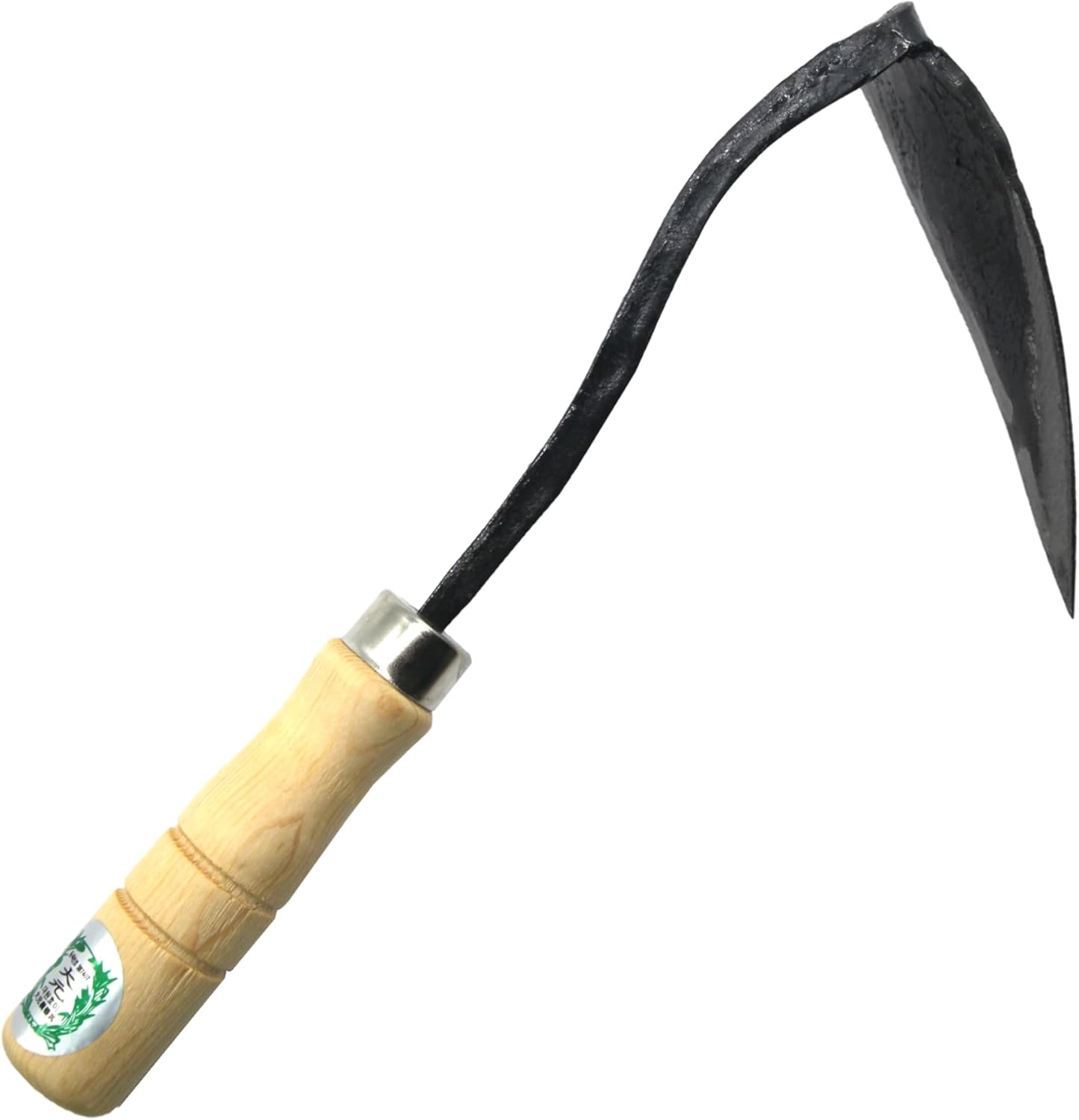
Ho-Mi Digger - Korean Triangle Blade
Fine Gardening receives a commission for items purchased through links on this site, including Amazon Associates and other affiliate advertising programs.

Planting in a Post-Wild World: Designing Plant Communities for Resilient Landscapes
Fine Gardening receives a commission for items purchased through links on this site, including Amazon Associates and other affiliate advertising programs.
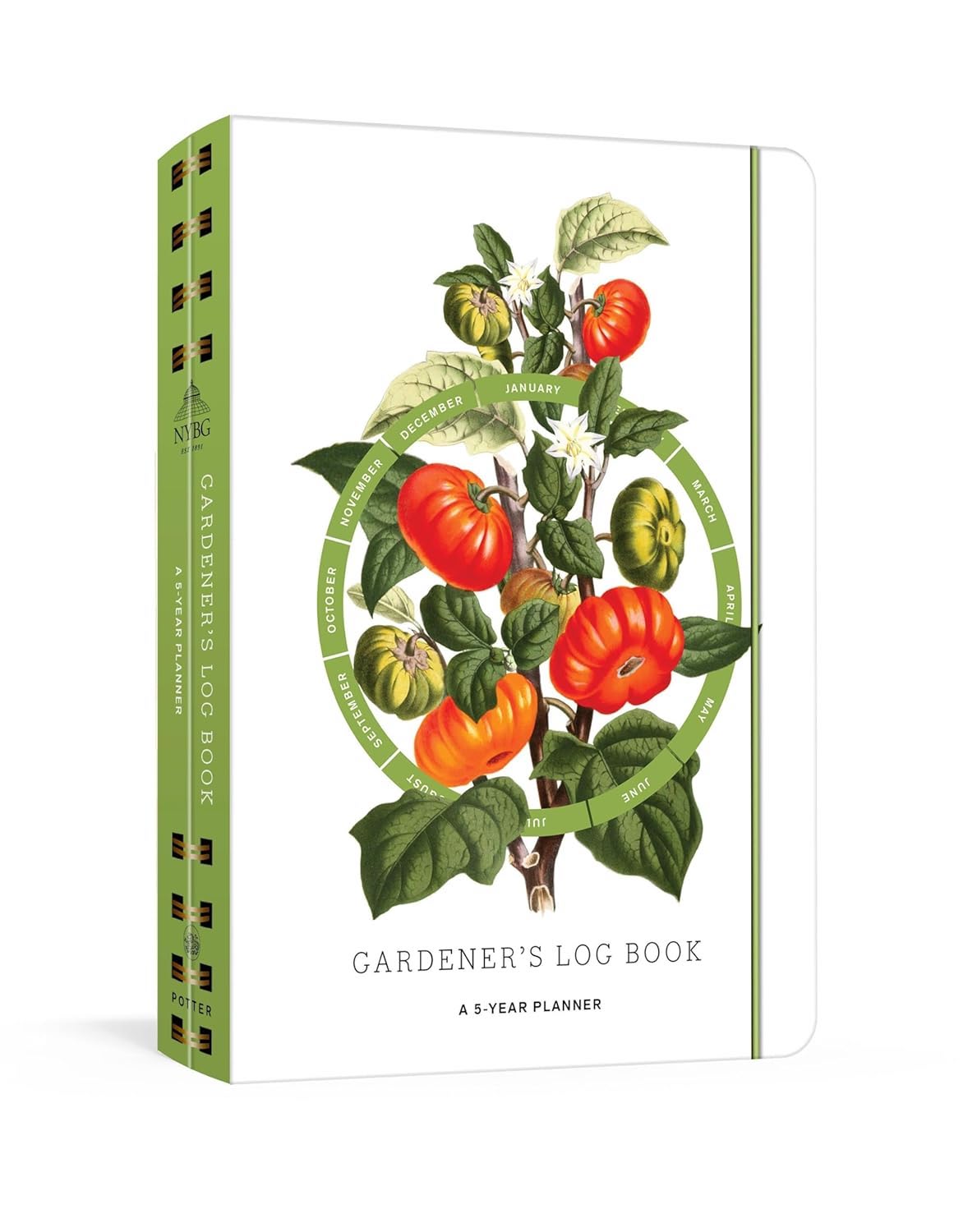
Gardener's Log Book from NYBG
Fine Gardening receives a commission for items purchased through links on this site, including Amazon Associates and other affiliate advertising programs.

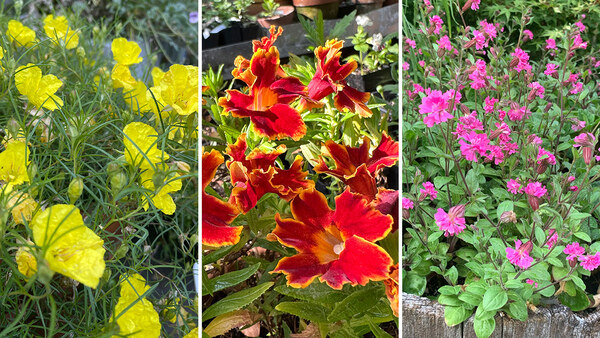
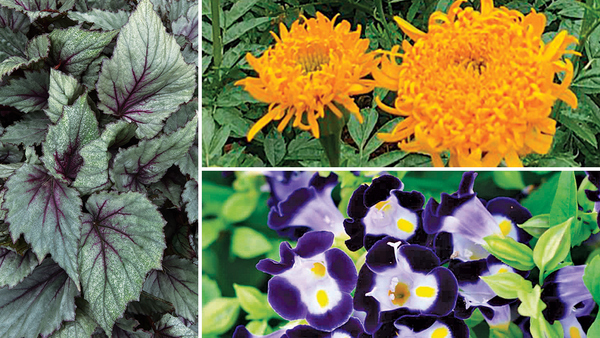
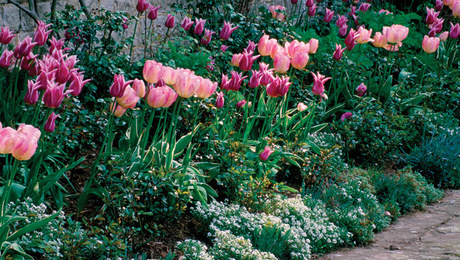
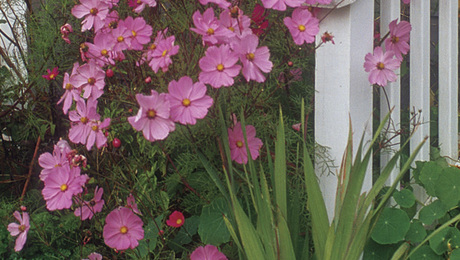













Comments
Log in or create an account to post a comment.
Sign up Log in